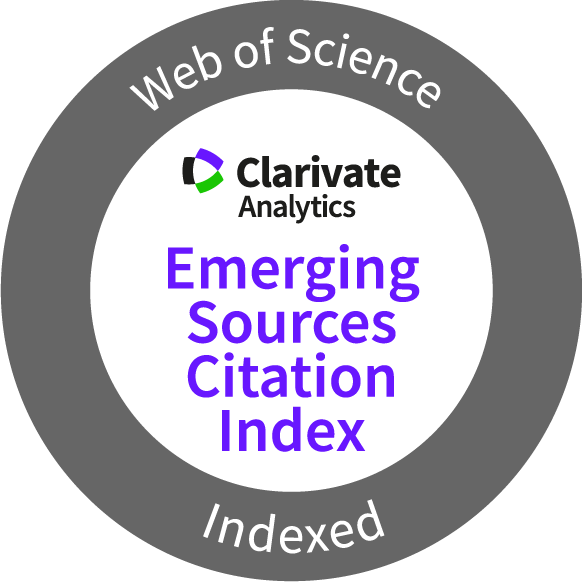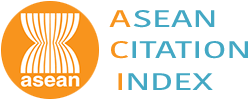Enhancing Jackfruit’s Bioactive Properties Through SCOBY Fermentation: Implications For Cosmeceuticals
Keywords:
Anti-inflammatory, fermentation, jackfruit, phytochemical, SCOBYAbstract
This study investigated the bio-processing technique of fermenting jackfruit pulp (JP) and leaves (JL) using a symbiotic culture of bacteria and yeast (SCOBY) to enhance their bioactive properties. To assess the nutritional value of the jackfruit extracts, the phenolic and organic acid compositions were determined. The extracts were also evaluated for their anti-inflammatory properties by measuring their ability to suppress the production of nitric oxide (NO) in response to bacterial lipopolysaccharide (LPS) stimulation in RAW 264.7 macrophage cell line. Furthermore, the inhibitory effects of the extracts on elastase and tyrosinase, enzymes associated with skin aging, were assessed. The fermentation process led to increased phenolic content. This included vitexin, salicylic acid, and benzoic acid. Acetic acid was the most abundant organic acid detected after fermentation, with concentrations ranging from 16.0 to 16.1 mg/mL. Additionally, the fermented extracts exhibited elevated levels of other beneficial organic acids such as citric and quinic acid. The study demonstrated significant reductions in nitrite formation in LPS-stimulated RAW 264.7 cells treated with jackfruit extracts. This finding suggests that the fermented extracts can effectively suppress NO production in a concentration-dependent manner. Among the fermented extracts, JL exhibited the highest inhibition of NO production at a concentration of 19.5%, resulting in a 42.23% reduction. Moreover, fermentation enhanced the inhibitory effects of the jackfruit extracts on elastase and tyrosinase, with inhibition rates ranging from 82.3% to 95.4%. Overall, the findings suggest that fermented jackfruit exhibits increased levels of phytochemical compounds and holds promise as a natural and beneficial ingredient in cosmeceutical products, offering anti-inflammatory and skin-aging benefits.
Downloads
Metrics
References
Abd Razak, D. L., Abd Rashid, N. Y., Jamaluddin, A., Sharifudin, S. A., Abd Kahar, A. & Long, K. 2017. Cosmeceutical potentials and bioactive compounds of rice bran fermented with single and mix culture of Aspergillus oryzae and Rhizopus oryzae. Journal of the Saudi Society of Agricultural Sciences, 16(2): 127–134. DOI: https://doi.org/10.1016/j.jssas.2015.04.001
Anantachoke, N., Duangrat, R., Sutthiphatkul, T., Ochaikul, D. & Mangmool, S. 2023. Kombucha beverages produced from fruits, vegetables, and plants: A review on their pharmacological activities and health benefits. Foods, 12: 9. DOI: https://doi.org/10.3390/foods12091818
Arung, E. T., Shimizu, K. & Kondo, R. 2007. Structure–activity relationship of prenyl-substituted polyphenols from Artocarpus heterophyllus as inhibitors of melanin biosynthesis in cultured melanoma cells. Chemistry & Biodiversity, 4(9): 2166–2171. DOI: https://doi.org/10.1002/cbdv.200790173
Aziz, N., Peng, K. S., Mustaffa, R., Abdullah, R. & Hamid, N. S. A. 2017. Effect of yeast and acetic fermentation on phytochemical and antioxidant properties of jackfruit pulp (Artocarpus heterophyllus L.). EDUCATUM Journal of Science, Mathematics and Technology, 4(1): 15–23. DOI: https://doi.org/10.37134/ejsmt.vol4.1.3.2017
Bae, J. Y. & Park, S. N. 2016. Evaluation of anti-microbial activities of ZnO, citric acid and a mixture of both against Propionibacterium acnes. International Journal of Cosmetic Science, 38(6): 550–557. DOI: https://doi.org/10.1111/ics.12318
Bai, J., Wu, Y., Zhong, K., Xiao, K., Liu, L., Huang, Y., Wang, Z. & Hong, G. A. O. 2018. A comparative study on the effects of quinic acid and shikimic acid on cellular functions of Staphylococcus aureus. Journal of Food Protection, 81(7): 1187–1192. DOI: https://doi.org/10.4315/0362-028X.JFP-18-014
Baliga, M. S., Shivashankara, A. R., Haniadka, R., Dsouza, J. & Bhat, H. P. 2011. Phytochemistry, nutritional and pharmacological properties of Artocarpus heterophyllus Lam (jackfruit): A review. Food Research International, 44(7): 1800–1811. DOI: https://doi.org/10.1016/j.foodres.2011.02.035
Banerjee, S., Roy, S., Sabui, R., Bhattacharjee, S. & Nandi, S. 2022. Jackfruit (Artocarpus heterophyllus): An organic cure against diabetes. International Journal of Pharmacy and Pharmaceutical Research, 24(1): 111–122.
Biworo, A., Tanjung, E., Iskandar, Khairina & Suhartono, E. 2015. Antidiabetic and antioxidant activity of jackfruit (Artocarpus heterophyllus) extract. Journal of Medical and Bioengineering, 4(4): 318–323. DOI: https://doi.org/10.12720/jomb.4.4.318-323
Borghi, S. M., Carvalho, T. T., Staurengo-Ferrari, L., Hohmann, M. S. N., Pinge-Filho, P., Casagrande, R. & Verri, W. A. 2013. Vitexin inhibits inflammatory pain in mice by targeting TRPV1, oxidative stress, and cytokines. Journal of Natural Products, 76(6): 1141–1146. DOI: https://doi.org/10.1021/np400222v
Chiocchio, I., Mandrone, M., Sanna, C., Maxia, A., Tacchini, M. & Poli, F. 2018. Screening of a hundred plant extracts as tyrosinase and elastase inhibitors, two enzymatic targets of cosmetic interest. Industrial Crops and Products, 122: 498–505. DOI: https://doi.org/10.1016/j.indcrop.2018.06.029
Choi, H. W., Tian, M., Song, F., Venereau, E., Preti, A., Park, S. W., Hamilton, K., Swapna, G. V. T., Manohar, M., Moreau, M., Agresti, A., Gorzanelli, A., De Marchis, F., Wang, H., Antonyak, M., Micikas, R. J., Gentile, D. R., Cerione, R. A., Schroeder, F. C. & Klessig, D. F. 2015. Aspirin′s active metabolite salicylic acid targets high mobility group box 1 to modulate inflammatory responses. Molecular Medicine, 21(1): 526–535. DOI: https://doi.org/10.2119/molmed.2015.00148
Choi, S. Il, Jung, T. D., Cho, B. Y., Choi, S. H., Sim, W. S., Han, X., Lee, S. J., Kim, Y. C. & Lee, O. H. 2019. Anti-photoaging effect of fermented agricultural by-products on ultraviolet B-irradiated hairless mouse skin. International Journal of Molecular Medicine, 44(2): 559–568. DOI: https://doi.org/10.3892/ijmm.2019.4242
Cialdai, F., Risaliti, C. & Monici, M. 2022. Role of fibroblasts in wound healing and tissue remodelling on Earth and in space. Frontiers in Bioengineering and Biotechnology, 10. DOI: https://doi.org/10.3389/fbioe.2022.958381
Cosme, P., Rodríguez, A. B., Espino, J. & Garrido, M. 2020. Plant phenolics: bioavailability as a key determinant of their potential health-promoting applications. Antioxidants 9(12): 1263. DOI: https://doi.org/10.3390/antiox9121263
de Miranda, J. F., Ruiz, L. F., Silva, C. B., Uekane, T. M., Silva, K. A., Gonzalez, A. G. M., Fernandes, F. F. & Lima, A. R. 2022. Kombucha: A review of substrates, regulations, composition, and biological properties. Journal of Food Science, 87(2): 503–527. DOI: https://doi.org/10.1111/1750-3841.16029
de Noronha, M. C., Cardoso, R. R., dos Santos D’Almeida, C. T., Vieira do Carmo, M. A., Azevedo, L., Maltarollo, V. G., Júnior, J. I. R., Eller, M. R., Cameron, L. C., Ferreira, M. S. L. & Barros, F. A. R. de. 2022. Black tea kombucha: Physicochemical, microbiological and comprehensive phenolic profile changes during fermentation, and antimalarial activity. Food Chemistry, 384: 132515. DOI: https://doi.org/10.1016/j.foodchem.2022.132515
Duan, S., Du, X., Chen, S., Liang, J., Huang, S., Hou, S., Gao, J. & Ding, P. 2020. Effect of vitexin on alleviating liver inflammation in a dextran sulfate sodium (DSS)-induced colitis model. Biomedicine & Pharmacotherapy, 121: 109683. DOI: https://doi.org/10.1016/j.biopha.2019.109683
Ghafari, A. T., Jahidin, A. H., Zakaria, Y. & Hazizul Hasan. 2022. Anti-inflammatory effects of Vitex trifolia leaves hydroalcoholic extract against hydrogen peroxide (H2O2) and lipopolysaccharide (LPS)-induced RAW 264.7 cells. Malaysian Applied Biology, 51(4): 185–200. DOI: https://doi.org/10.55230/mabjournal.v51i4.28
Ghimire, B.K., Seo, J.W., Kim, S.H., Lee, J.G., Yu, C.Y. & Chung, I.M. 2021. Influence of harvesting time on phenolic and mineral profiles and their association with the antioxidant and cytotoxic effects of Atractylodes japonica Koidz. Agronomy, 11: 1327. DOI: https://doi.org/10.3390/agronomy11071327
Hassan, M., Shahzadi, S. & Kloczkowski, A. 2023. Tyrosinase inhibitors naturally present in plants and synthetic modifications of these natural products as anti-melanogenic agents: A Review. Molecules, 28(1): 378. DOI: https://doi.org/10.3390/molecules28010378
Jagtap, U. B., Panaskar, S. N. & Bapat, V. A. 2010. Evaluation of antioxidant capacity and phenol content in jackfruit ( Artocarpus heterophyllus lam.) fruit pulp. Plant Foods for Human Nutrition, 65(2): 99–104. DOI: https://doi.org/10.1007/s11130-010-0155-7
Jakubczyk, K., Kałduńska, J., Kochman, J. & Janda, K. 2020. Chemical profile and antioxidant activity of the kombucha beverage derived from white, green, black and red tea. Antioxidants, 9(5): 447. DOI: https://doi.org/10.3390/antiox9050447
Jeong, H. Y., Choi, Y. S., Lee, J. K., Lee, B. J., Kim, W. K. & Kang, H. 2017. Anti-inflammatory activity of citric acid-treated wheat germ extract in lipopolysaccharide-stimulated macrophages. Nutrients, 9(7): 730. DOI: https://doi.org/10.3390/nu9070730
Jin, H. K., Bum, C. L., Jin, H. K., Gwan, S. S., Dong, H. L., Kyung, E. L., Yeo, P. Y. & Hyeong, B. P. 2005. The isolation and antioxidative effects of vitexin from Acer palmatum. Archives of Pharmacal Research, 28(2): 195–202. DOI: https://doi.org/10.1007/BF02977715
Kanteev, M., Goldfeder, M. & Fishman, A. 2015. Structure–function correlations in tyrosinases. Protein Science: A Publication of the Protein Society, 24(9): 1360-1369. DOI: https://doi.org/10.1002/pro.2734
Koh, S. P., Maarof, S., Sew, Y. S., Sabidi, S., Abdullah, R., Mohd Danial, A., Nur Diyana, A. & Mustaffa, R. 2020. Fermented jackfruit leaf beverage offers new affordable and effective diabetes therapy. Food Research, 4: 19–25. DOI: https://doi.org/10.26656/fr.2017.4(S6).012
Koh, S. P., Sharifudin, S. A., Abdullah, R., Hamid, N. S. A., Mirad, R. & Mustaffa, R. 2019. Antimicrobial efficacy of fermented mango leaves beverage towards selected foodborne pathogens. Malaysian Journal of Microbiology, 15: 320–326. DOI: https://doi.org/10.21161/mjm.191548
Kruk, M., Trząskowska, M., Ścibisz, I. & Pokorski, P. 2021. Application of the “SCOBY” and kombucha tea for the production of fermented milk drinks. Microorganisms, 9(1): 123. DOI: https://doi.org/10.3390/microorganisms9010123
Laavanya, D., Shirkole, S. & Balasubramanian, P. 2021. Current challenges, applications and future perspectives of SCOBY cellulose of Kombucha fermentation. Journal of Cleaner Production, 295: 126454. DOI: https://doi.org/10.1016/j.jclepro.2021.126454
Lapenna, D., Ciofani, G., Pierdomenico, S. D., Neri, M., Cuccurullo, C., Giamberardino, M. A. & Cuccurullo, F. 2009. Inhibitory activity of salicylic acid on lipoxygenase-dependent lipid peroxidation. Biochimica et biophysica acta, 1790(1): 25–30. DOI: https://doi.org/10.1016/j.bbagen.2008.09.007
Lee, H. S., Kim, M. R., Park, Y., Park, H. J., Chang, U. J., Kim, S. Y. & Suh, H. J. 2012. Fermenting red ginseng enhances its safety and efficacy as a novel skin care anti-aging ingredient: in vitro and animal study. Journal of Medicinal Food, 15(11): 1015. DOI: https://doi.org/10.1089/jmf.2012.2187
Leonard, W., Zhang, P., Ying, D., Adhikari, B. & Fang, Z. 2021. Fermentation transforms the phenolic profiles and bioactivities of plant-based foods. Biotechnology Advances, 49: 107763. DOI: https://doi.org/10.1016/j.biotechadv.2021.107763
Lin, J.-Y. & Tang, C.-Y. 2008. Strawberry, loquat, mulberry, and bitter melon juices exhibit prophylactic effects on LPS-induced inflammation using murine peritoneal macrophages. Food Chemistry, 107(4): 1587–1596. DOI: https://doi.org/10.1016/j.foodchem.2007.10.025
Liu, A. P. R., Zeng, H., Liu, X., Dou, S., Xu, W., Li, N., Liu, X., Zhang, W., Hu, Z. & Liu, R. 2010. Huang-Lian-Jie-Du-Tang exerts anti-inflammatory effects in rats through inhibition of nitric oxide production and eicosanoid biosynthesis via the lipoxygenase pathway. Journal of Pharmacy and Pharmacology, 61(12): 1699–1707. DOI: https://doi.org/10.1211/jpp/61.12.0016
Liu, K.L. 2022. Natural products in cosmetics. Natural Product Bioprospect, 12:40. DOI: https://doi.org/10.1007/s13659-022-00363-y
Liyanaarachchi, G. D., Samarasekera, J. K. R. R., Mahanama, K. R. R. & Hemalal, K. D. P. 2018. Tyrosinase, elastase, hyaluronidase, inhibitory and antioxidant activity of Sri Lankan medicinal plants for novel cosmeceuticals. Industrial Crops and Products, 111: 597–605. DOI: https://doi.org/10.1016/j.indcrop.2017.11.019
Muthamil, S., Balasubramaniam, B., Balamurugan, K. & Pandian, S. K. 2018. Synergistic effect of quinic acid derived from Syzygium cumini and undecanoic acid against Candida spp. biofilm and virulence. Frontiers in Microbiology, 9: 2835. DOI: https://doi.org/10.3389/fmicb.2018.02835
Nagoba, B. S., Selkar, S. P., Wadher, B. J. & Gandhi, R. C. 2013. Acetic acid treatment of pseudomonal wound infections - A review. In Journal of Infection and Public Health , 6(6): 410–415. DOI: https://doi.org/10.1016/j.jiph.2013.05.005
Nagoba, B., Davane, M., Gandhi, R., Wadher, B., Suryawanshi, N. & Selkar, S. 2017. Treatment of skin and soft tissue infections caused by Pseudomonas aeruginosa—A review of our experiences with citric acid over the past 20 years. Wound Medicine, 19: 5–9. DOI: https://doi.org/10.1016/j.wndm.2017.09.005
Aziz, N., Peng, K.S., Abdullah, R., Hamid, N.A. & Mustaffa, R. 2018. The phytochemical and antioxidant characteristics of fermented jackfruit (Artocarpus heterophyllus L.) leaves using single and mixed starter culture. Journal of Food Science and Engineering, 8(1): 55-60. DOI: https://doi.org/10.17265/2159-5828/2018.01.006
Omar, H. S., El-Beshbishy, H. A., Moussa, Z., Taha, K. F. & Singab, A. N. B. 2011. Antioxidant activity of Artocarpus heterophyllus Lam. (Jackfruit) leaf extracts: remarkable attenuations of hyperglycemia and hyperlipidemia in streptozotocin-diabetic rats. The Scientific World Journal, 11: 788–800. DOI: https://doi.org/10.1100/tsw.2011.71
Ong, B. T., Nazimah, S. A. H., Osman, A., Quek, S. Y., Voon, Y. Y., Hashim, D. M., Chew, P. M. & Kong, Y. W. 2006. Chemical and flavour changes in jackfruit (Artocarpus heterophyllus Lam.) cultivar J3 during ripening. Postharvest Biology and Technology, 40(3): 279–286. DOI: https://doi.org/10.1016/j.postharvbio.2006.01.015
Pluemsamran, T., Onkoksoong, T. & Panich, U. 2012. Caffeic acid and ferulic acid inhibit UVA-induced matrix metalloproteinase-1 through regulation of antioxidant defense system in keratinocyte HaCaT Cells. Photochemistry and Photobiology, 88(4): 961–968. DOI: https://doi.org/10.1111/j.1751-1097.2012.01118.x
Ranjan, R., Kishore, K., TJ, S., Jha, A. K., Ojha, B. K., Kumar, S. & Kumar, R. 2023. Nutraceutical potential of vitexin: A flavone glycoside. The Journal of Phytopharmacology, 12(1): 44–50. DOI: https://doi.org/10.31254/phyto.2023.12107
Rayendra, R., Wientarsih, I., Priosoeryanto, B. P. & Gunawan, H. 2016. Potency of Jack Fruit Leaves as Tyrosinase Inhibitor. International Journal of Sciences: Basic and Applied Research, 30(4): 351–357.
Ryu, J.-H., Ahn, H., Kim, J. Y. & Kim, Y.-K. 2003. Inhibitory activity of plant extracts on nitric oxide synthesis in LPS-activated macrophages. Phytotherapy Research, 17(5): 485–489. DOI: https://doi.org/10.1002/ptr.1180
Shao, W. H., Chen, B. Y., Cheng, X. R., Yuan, H., Chen, H., Chang, W. L., Ye, J., Lin, S., Sun, Q. Y. & Zhang, W. D. 2015. Synthesis and evaluation of new α-methylene-γ-lactone carbamates with NO production inhibitory effects in lipopolysaccharide-induced RAW 264.7 macrophages. European Journal of Medicinal Chemistry, 93: 274–280. DOI: https://doi.org/10.1016/j.ejmech.2015.02.016
Singh, D. P., Moore, C. A., Gilliland, A. & Carr, J. P. 2004. Activation of multiple antiviral defence mechanisms by salicylic acid. Molecular Plant Pathology, 5(1): 57–63. DOI: https://doi.org/10.1111/j.1364-3703.2004.00203.x
Sornkayasit, K., Jumnainsong, A., Srijampa, S., Ruknarong, L., Buddhisa, S., Thanonkeo, P., Sutthanut, K., Thukhammee, W., Wattanathorn, J., Leelayuwat, C. & Tippayawat, P. 2024. Immunomodulatory potentials of modified kombucha with pineapple by-products in aging: An ex vivo study. Journal of Functional Foods, 112: 105933. DOI: https://doi.org/10.1016/j.jff.2023.105933
Srinivasan, M., Sudheer, A. R. & Menon, V. P. 2007. Ferulic acid: Therapeutic potential through its antioxidant property. Journal of Clinical Biochemistry and Nutrition, 40(2): 92. DOI: https://doi.org/10.3164/jcbn.40.92
Sudip, S. 2024. Organic Cosmetic Market: Organic Cosmetic Market Forecast by Skin Care and Hair Care for 2024 to 2034. Future Market Insights, United States.
Suganya, P., Jeyaprakash, K., Mallavarapu, G. R. & Murugan, R. 2015. Comparison of the chemical composition, tyrosinase inhibitory and anti-inflammatory activities of the essential oils of Pogostemon plectranthoides from India. Industrial Crops and Products, 69: 300–307. DOI: https://doi.org/10.1016/j.indcrop.2015.02.045
Swami, S. B. & Kalse, S. B. 2019. Jackfruit (Artocarpus heterophyllus): Biodiversity, Nutritional Contents, and Health. Reference Series in Phytochemistry, 2237–2259. DOI: https://doi.org/10.1007/978-3-319-78030-6_87
Taciak, B., Białasek, M., Braniewska, A., Sas, Z., Sawicka, P., Kiraga, Ł., Rygiel, T. & Król, M. 2018. Evaluation of phenotypic and functional stability of RAW 264.7 cell line through serial passages. PLoS ONE, 13. DOI: https://doi.org/10.1371/journal.pone.0198943
Terefe, E. M., Okalebo, F. A., Derese, S., Muriuki, J. & Batiha, G. E. S. 2021. In vitro cytotoxicity and anti-HIV activity of crude extracts of Croton macrostachyus, Croton megalocarpus and Croton dichogamus. Journal of Experimental Pharmacology, 13: 971. DOI: https://doi.org/10.2147/JEP.S335104
Thapa, N., Thapa, P., Bhandari, J., Niraula, P., Shrestha, N. & Shrestha, B. G. 2016. Study of phytochemical, antioxidant and antimicrobial activity of Artocarpus heterophyllus. Nepal Journal of Biotechnology, 4(1): 47–53. DOI: https://doi.org/10.3126/njb.v4i1.16347
Tjahjono, Y., Karnati, S., Foe, K., Anggara, E., Gunawan, Y. N., Wijaya, H., Steven, Suyono, H., Esar, S. Y., Hadinugroho, W., Wihadmadyatami, H., Ergün, S., Widharna, R. M. & Caroline. 2021. Anti-inflammatory activity of 2-((3-(chloromethyl)benzoyl) oxy) benzoic acid in LPS-induced rat model. Prostaglandins & Other Lipid Mediators, 154. DOI: https://doi.org/10.1016/j.prostaglandins.2021.106549
Tu, Y. Y., Xia, H. L. & Watanabe, N. 2005. Changes in catechins during the fermentation of green tea. Applied Biochemistry and Microbiology, 41(6): 574–577. DOI: https://doi.org/10.1007/s10438-005-0104-7
Vázquez-González, Y., Ragazzo-Sánchez, J. A. & Calderón-Santoyo, M. 2020. Characterization and antifungal activity of jackfruit (Artocarpus heterophyllus Lam.) leaf extract obtained using conventional and emerging technologies. Food Chemistry, 330: 127211. DOI: https://doi.org/10.1016/j.foodchem.2020.127211
Villarreal-Soto, S. A., Beaufort, S., Bouajila, J., Souchard, J. P. & Taillandier, P. 2018. Understanding kombucha tea fermentation: A Review. Journal of Food Science, 83(3): 580–588. DOI: https://doi.org/10.1111/1750-3841.14068
Wang, X. L., Di, X. X., Shen, T., Wang, S. Q. & Wang, X. N. 2017. New phenolic compounds from the leaves of Artocarpus heterophyllus. Chinese Chemical Letters, 28(1): 37–40. DOI: https://doi.org/10.1016/j.cclet.2016.06.024
Wen, L., Zhao, Y., Jiang, Y., Yu, L., Zeng, X., Yang, J., Tian, M., Liu, H. & Yang, B. 2017. Identification of a flavonoid C-glycoside as potent antioxidant. Free Radical Biology and Medicine, 110: 92–101. DOI: https://doi.org/10.1016/j.freeradbiomed.2017.05.027
Wójciak, M., Ziemlewska, A., Zagórska-Dziok, M., Nizioł-Łukaszewska, Z., Szczepanek, D., Oniszczuk, T. & Sowa, I. 2023. Anti-inflammatory and protective effects of water extract and bioferment from Sambucus nigra fruit in LPS-induced human skin fibroblasts. International Journal of Molecular Sciences, 24(12): 10286. DOI: https://doi.org/10.3390/ijms241210286
Xie, G., Ye, M., Wang, Y., Ni, Y., Su, M., Huang, H., Qiu, M., Zhao, A., Zheng, X., Chen, T. & Jia, W. 2009. Characterization of pu-erh tea using chemical and metabolic profiling approaches. Journal of Agricultural and Food Chemistry, 57(8): 3046–3054. DOI: https://doi.org/10.1021/jf804000y
Yacob, A. 2022. Webinar Series On Tropical Fruits - Jackfruit. https://www.itfnet.org/v1/2022/07/tfnet-kickstarts-international-webinar-series-on-minor-tropical-fruits-with-jackfruit (accessed 04.12.24)
Zhu, Q. Y., Zhang, A., Tsang, D., Huang, Y. & Chen, Z. Y. 1997. Stability of Green Tea Catechins. Journal of Agricultural and Food Chemistry, 45(12): 4624–4628. DOI: https://doi.org/10.1021/jf9706080
Ziemlewska, A., Nizioł-Łukaszewska, Z., Bujak, T., Zagórska-Dziok, M., Wójciak, M. & Sowa, I. 2021. Effect of fermentation time on the content of bioactive compounds with cosmetic and dermatological properties in Kombucha Yerba Mate extracts. Scientific Reports 11(1): 1–15. DOI: https://doi.org/10.1038/s41598-021-98191-6
Zofia, N. Ł., Aleksandra, Z., Tomasz, B., Martyna, Z. D., Magdalena, Z., Zofia, H. B. & Tomasz, W. 2020. Effect of fermentation time on antioxidant and anti-ageing properties of green coffee kombucha ferments. Molecules, 25(22): 5394. DOI: https://doi.org/10.3390/molecules25225394
Published
How to Cite
Issue
Section
Any reproduction of figures, tables and illustrations must obtain written permission from the Chief Editor (wicki@ukm.edu.my). No part of the journal may be reproduced without the editor’s permission
Funding data
-
Institut Penyelidikan dan Kemajuan Pertanian Malaysia
Grant numbers P21003004050001




















